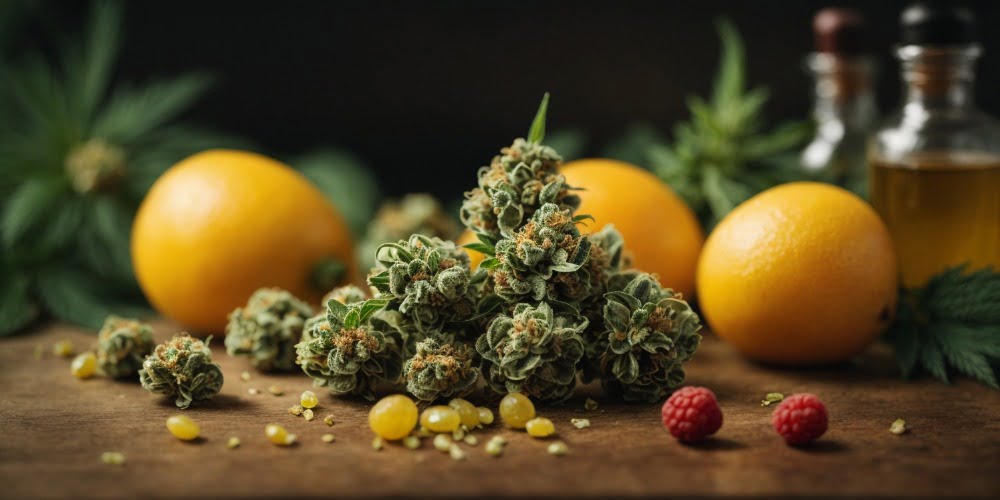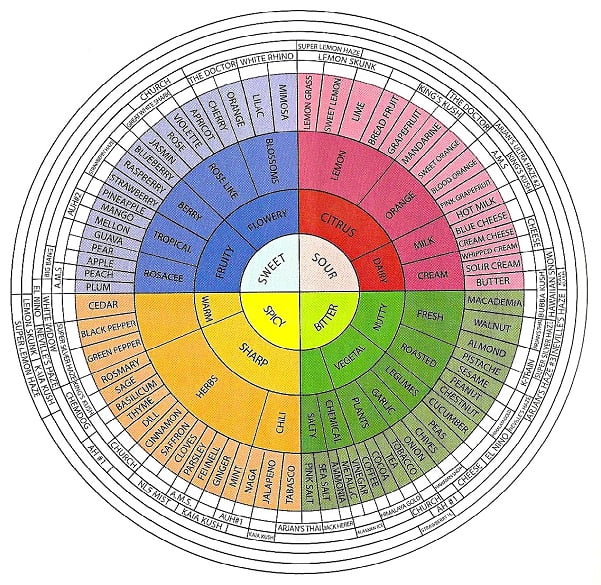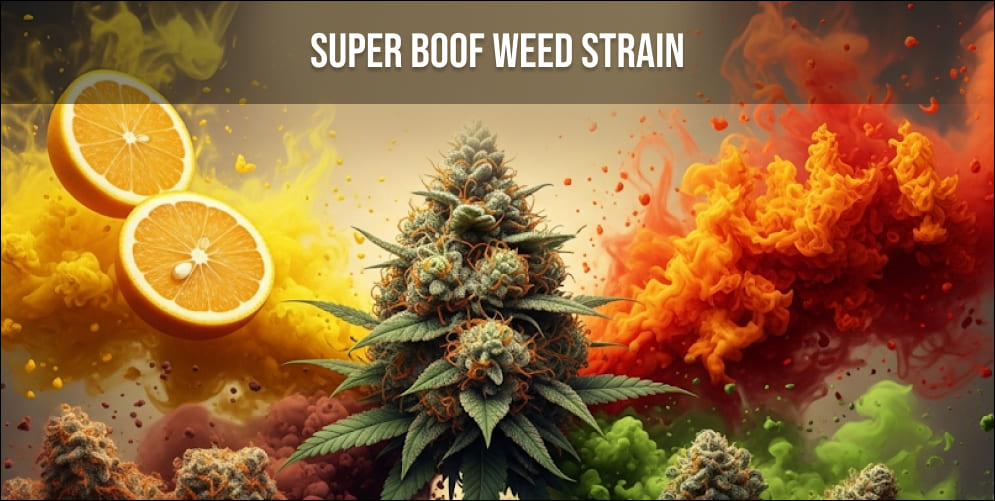Weed Terpenes: Exploring the Fascinating Realm

Weed terpenes are Nature’s hidden gems, crafted within secretory cells nestled inside the glandular trichomes of the cannabis plant. These aromatic compounds are nature’s response to the touch of light, flourishing in vibrant splendor. They bloom most intensely in the youthful, unfertilized feminized plants, revealing their rich diversity and potential. And, when it’s time to capture their essence, the art of evaporation transforms these precious terpenes into exquisite essential oils.
- What is a terp sauce?
- Can Terpenes Induce a High?
- Effects and health benefits of caryophyllene terpene

Terpenes are the main components of flavors and fragrances. They are responsible for the aroma of the plant. They act on receptors and neurotransmitters, and they tend to combine or dissolve in lipids. They act as serotonin reuptake inhibitors, they increase norepinephrine activity, increase dopamine release and increase GABA (an inhibitory neurotransmitter). Unfortunately, the terpenes in marijuana are still poorly understood and we still don’t fully understand how they can be used medicinally to treat specific conditions.
What are flavonoids?
Flavonoids are one of the largest groups of plant substances. This group includes over 6,000 already identified substances. About 20 compounds, including apigenin, quercetin, cannaflavin A and B, β-sitosterol and vitexin, isovitexin, kaempferol, luteolin and orientin, are found in hemp. Flavonoids are known for their antioxidant and anti-inflammatory properties. They also affect the color of the product.
Wheel of weed Terpenes

While there are hundreds of terpenes, there are a few standouts that always highlight the flavor. In this regard, the cannabis industry is very similar to the perfume industry, which also uses certain key blends to create scents.
Weed terpenes are responsible for the smell of cannabis and the psychological effects that occur after consumption. In most cases, the smell of musk or clove produces a relaxing, sedative effect (due to the high content of the terpene myrcene), the pine aroma promotes mental activity and improves memory (due to pinene), and lemon notes give vigor to the mind (due to limonene).
- Myrcene – It is the most popular monoterpene found in cannabis. The aroma is described as musky, earthy, herbal, akin to cloves. The high myrcene content in cannabis (about 0.5%) leads to the well-known “stone effect” so typical of indica strains. In addition to cannabis, it is found in caraway, hops, citrus fruits, eucalyptus, lemongrass and many other plants.
- Pinene – is used as an anti-inflammatory, expectorant, bronchodilator, and antiseptic. α-pinene is a natural compound that is isolated from pine essential oil. Pinene is also thought to reduce the effects of THC.
- Limonene – Monoterpenoid with a bright citrus aroma. Varieties that contain a lot of limonene have a tonic effect. It is found in rosemary, peppermint, juniper, citrus fruits, and pine oil. It is quickly absorbed when smoking and enters the bloodstream. Helps with the absorption of other terpenes through the skin.
- Сaryophyllene – In addition to hemp, beta-caryophyllene can be found in basil, cloves, cinnamon leaves, and black pepper. The aroma is described as peppery, woody and/or spicy. It is the only terpene studied that interacts with the endocannabinoid system (specifically CB2 receptors). Deeper research has shown that when taken orally, phytocannabinoids, along with CBD and β-caryophyllene, help treat chronic pain and are safe with no side effects.
- Linalool – Monoterpenoid with a floral aroma. Used for centuries as a sleeping pill. Reduces anxiety triggered by THC, making it useful in treating both psychosis and anxiety. Strengthens the immune system; helps with lung diseases; and restores cognitive and emotional functions.
- Camphene – Camphene – monoterpene of plant origin with the aroma of humid forests and pine needles. Has a relaxing effect. Contains an antibiotic, anesthetic and has an antimalarial effect.
- Phellandrene – Described as minty, with slight notes of citrus. One of the main components of turmeric oil.
It was first discovered in eucalyptus oil. Contained in large quantities in cinnamon, ginger, garlic, dill and parsley. - Humulene – A cyclic natural sesquiterpene, also known as α-caryophyllene. Found in sativa cannabis, hops and Vietnamese coriander. It is humulene that gives beer such an aroma. It is used as an antitumor, antibacterial, anti-inflammatory and appetite suppressant.
- Pulegone – Monocyclic monoterpenoid. It is found in small quantities in hemp. It breaks down acetylcholine in the brain and allows nerve cells to communicate with each other more effectively.
Ethnopharmacological research shows that the terpenoid has sedative and antipyretic effects. It also relieves side effects such as loss of short-term memory when consuming high doses of THC.
Weed terpenes are only a small part of the now emerging potential of an ancient plant, which is not only capable of changing the psychological elements of the perception of life, but also significantly changing the pharmaceuticals of the future.



























